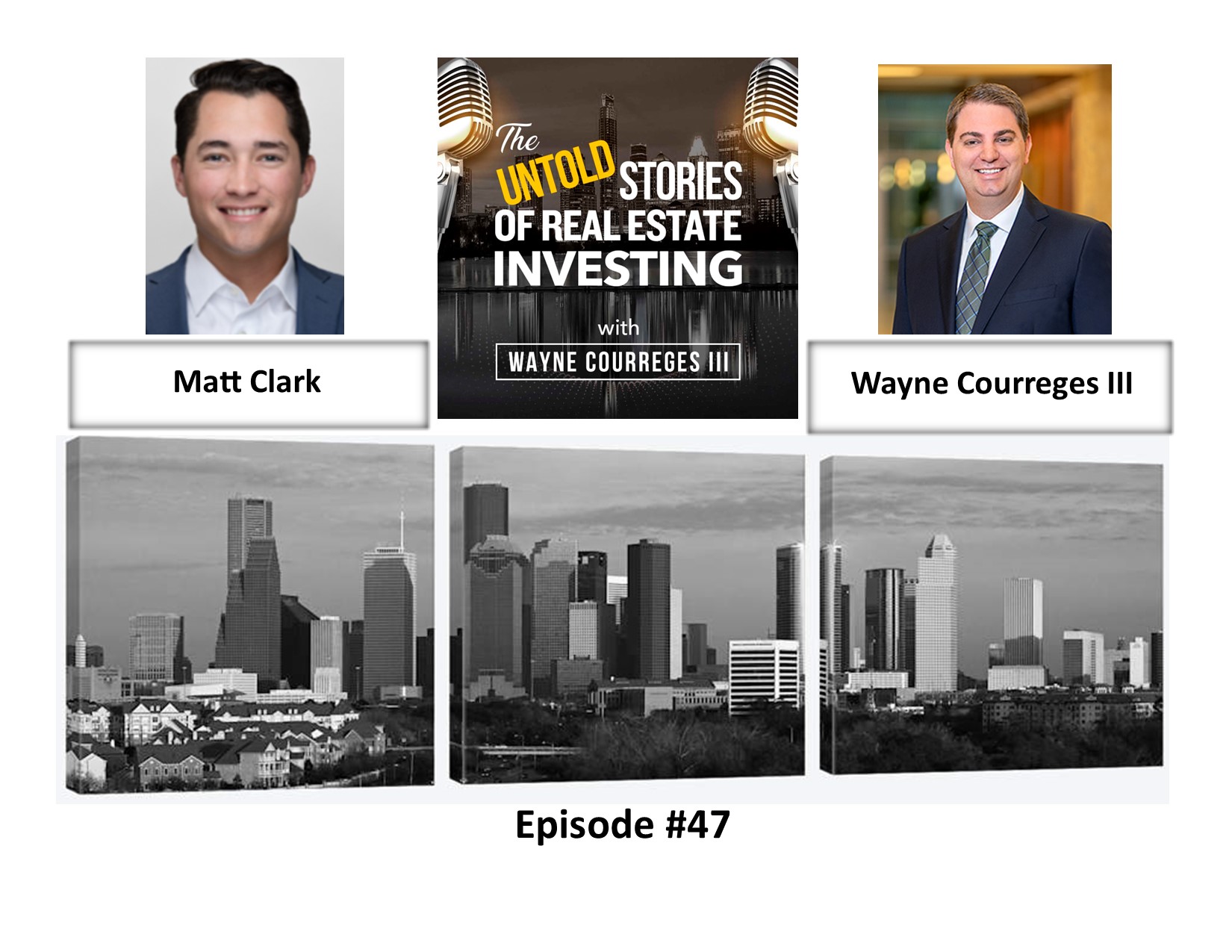
In this episode of The Untold Stories of Real Estate Investing, host Wayne Courreges III speaks with expert Matt Clark to dive into the details of how real estate investors can save thousands in taxes through cost segregation.
Matt Clark currently lives in Houston, TX, where he was born and raised and attended the University of Houston. His journey into the world of real estate was an exciting pivot from the software realm, where he honed his skills as a value-added seller.
Currently, Matt is part of the dynamic team at Madison SPECS, a company with over 15 years of experience in the field and an impressive track record of completing 10,000 studies nationwide. In his role, Matt specializes in offering Cost Segregation Studies, helping real estate investors unlock hidden value within their properties and optimize their financial returns.
With a passion for property and a commitment to delivering top-notch service, Matt is dedicated to helping clients achieve their real estate investment goals through the power of Cost Segregation.
Topics on Today’s Episode:
- Cost segregation study timeframe: Typically, the IRS has a seven-year cutoff. Workarounds and special scenarios can extend the timeframe to up to ten years
- There are workarounds to potentially extend the timeline up to ten years.
- Cost segregation (cost seg) calculated per property, not per investor
- Savings pass down to individual investors if the property has multiple investors
- Classification of properties. Multifamily properties are typically considered commercial and fall under a 39-year scale.
- Residential properties with long-term leases qualify for residential tax breaks
- Cost segregations break down each component of the property into different asset classes. This allows depreciation deductions to be taken on shorter time frames for components that qualify. Therefore, this accelerates the rate at which depreciation deductions can reduce taxes on the property’s income.
- The depreciable basis is the property value minus the land value (around 15% in Texas)
- Quicker tax savings are available by accelerating depreciation deductions
- Bonus depreciation and carry-forward deduction: Upfront deduction of all five-year and fifteen-year assets. Rates are currently at 80% and phasing out in 20% increments. Deductions carry forward indefinitely
- Eligibility and benefits of cost segregation: Anyone who invests in real estate and plans to hold the asset for more than a couple of years is eligible
- Active investor status for real estate professionals with 750 hours of service in real estate activities.
- Maximize tax savings with cost segregation: To meet this goal, it is important to add every little piece of the property for larger lump sum savings.
- Cost segregation typically worth it for most investment properties
- Depreciation schedules and savings: Multifamily properties are commercial, and residential properties can still save a significant amount
- Investors will save on a 39-year schedule
- Bonus depreciation phase-out and potential return. Last year was 100% bonus segregation, this year it’s 80% and phasing out by 20% each year, but there is speculation on bonus depreciation potentially returning due to upcoming elections
- In-person versus virtual property study: Depends on type of property and availability of online information. However, larger properties may require in-person study, while residential properties can be done virtually if extensive online information is available.
Links and Resources:
Matt Clark
https://www.linkedin.com/in/mczz/


 Subscribe to our newsletter so you never miss out on new investment opportunities, podcasts, blogs, news and events.
Subscribe to our newsletter so you never miss out on new investment opportunities, podcasts, blogs, news and events.